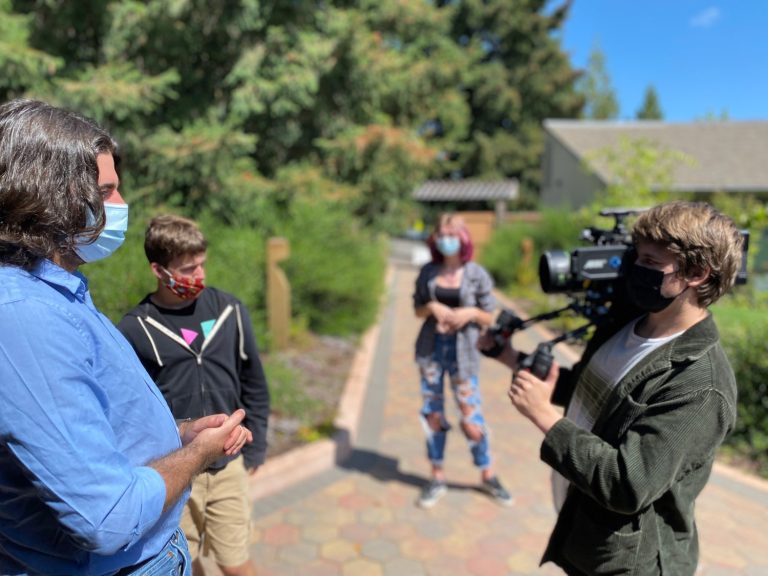Sustainable Filmmaking: Eco-Friendly Practices for Video Production in Northwest Ohio
Sustainable filmmaking has become a significant trend in the video production industry, as more creators and production companies are recognizing the impact of their projects on the environment. Northwest Ohio, with its burgeoning video production scene, is no exception. This region is home to innovative filmmakers who are utilizing eco-friendly practices to minimize their carbon footprint while still delivering quality content.
One of the key strategies embraced by sustainable filmmakers in Northwest Ohio is the use of digital technology, reducing the need for physical resources. By opting for digital shooting and editing, production teams can significantly cut down on the waste generated from traditional film processes. This shift is evident across various projects in the region, from small indie films to large commercial productions, positioning the area as a pioneer in digital transformation in the industry. One such example is the success of Rerucha Video Productions, a leading production company in the area known for its green initiatives and digital-first approach.
Another critical aspect of sustainable filmmaking is the efficient use of resources. Production teams are increasingly turning to local suppliers and services to fulfill their needs, reducing the emissions associated with transporting goods from outside the region. This approach not only benefits the environment but also supports the local economy, creating a thriving ecosystem of businesses that contribute to the film production industry. In towns like Video Production in Port Clinton Ohio, companies are finding creative ways to support productions with sustainable materials and services, from set design to catering.
Moreover, energy consumption is a major concern in video production, with lighting and equipment requiring substantial power. In response, many filmmakers in Northwest Ohio are investing in energy-efficient technologies and renewable energy sources. LED lighting has become the norm, dramatically reducing electricity usage compared to traditional lighting solutions. Additionally, some productions are incorporating solar panels or other renewable sources to power their sets, demonstrating a commitment to sustainable energy practices.
Waste management is also a vital component of eco-friendly production. Conscious efforts are made on set to recycle materials and reduce the use of single-use plastics. Composting food waste, using biodegradable materials, and setting up proper recycling stations are becoming standard practices in the region. These initiatives have helped Northwest Ohio set itself apart as a leader in responsible filmmaking, earning recognition from environmental groups and drawing interest from professionals looking to learn and adopt these practices.
Collaboration is central to achieving sustainability goals, and this is where Northwest Ohio excels. Through collective efforts, production companies, local governments, and academic institutions are working together to create a comprehensive framework for sustainable filmmaking. This collaboration involves sharing resources, best practices, and innovations to help each production achieve its sustainability objectives. Education and training programs are being developed to equip filmmakers with the knowledge and skills needed to implement eco-friendly practices on their sets.
Community engagement also plays a pivotal role in sustainable filmmaking. By involving local communities in the process, filmmakers not only raise awareness about environmental issues but also foster a supportive environment for green initiatives. Through partnerships with schools and community organizations, video production in Northwest Ohio is not just a creative endeavor but a vehicle for social change.
As the demand for content continues to grow, sustainable filmmaking in Northwest Ohio faces both challenges and opportunities. The region’s commitment to eco-friendly practices positions it as a model for other areas looking to adopt similar strategies. With ongoing advancements in technology and a strong emphasis on environmental stewardship, Northwest Ohio is poised to remain at the forefront of sustainable video production.
Moreover, with the increasing popularity of Video production in Napoleon Ohio, more filmmakers are exploring how sustainable methods can enhance their projects. This town has become a hub for creative minds focused on integrating sustainability into their storytelling, providing a blueprint for future productions in the region.
In conclusion, sustainable filmmaking in Northwest Ohio is not just a trend but a testament to the region’s dedication to environmental responsibility and creative excellence. Through innovative practices, collaboration, and a commitment to education, this area serves as a shining example of how video production can be both successful and sustainable, paving the way for a greener future in the industry.




